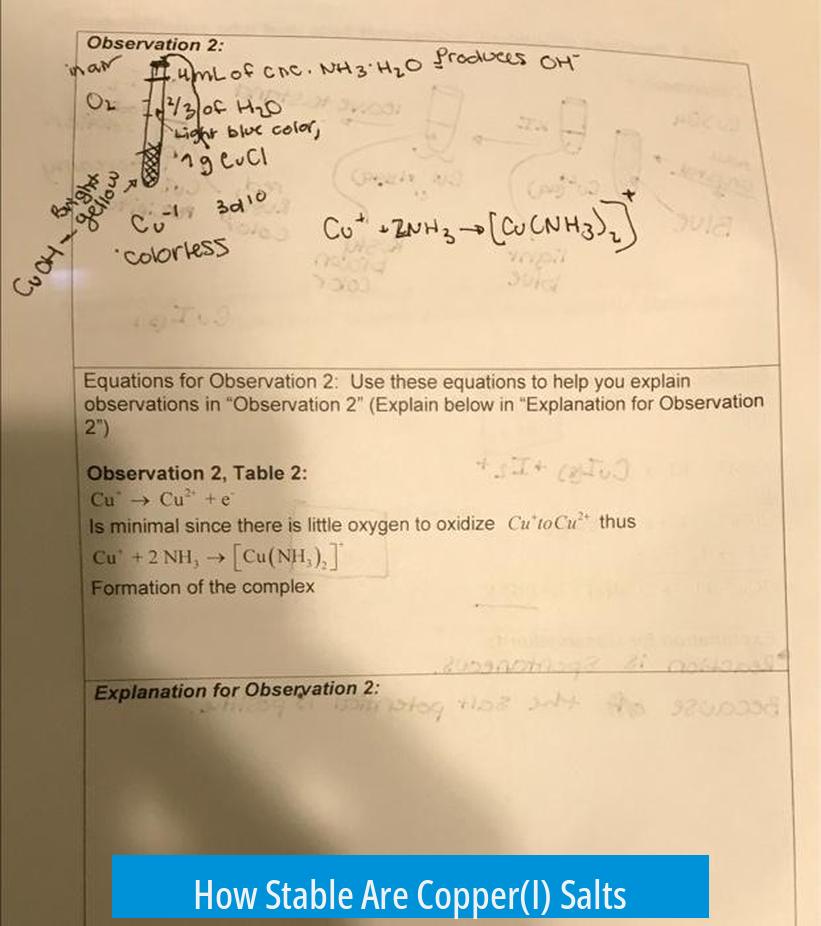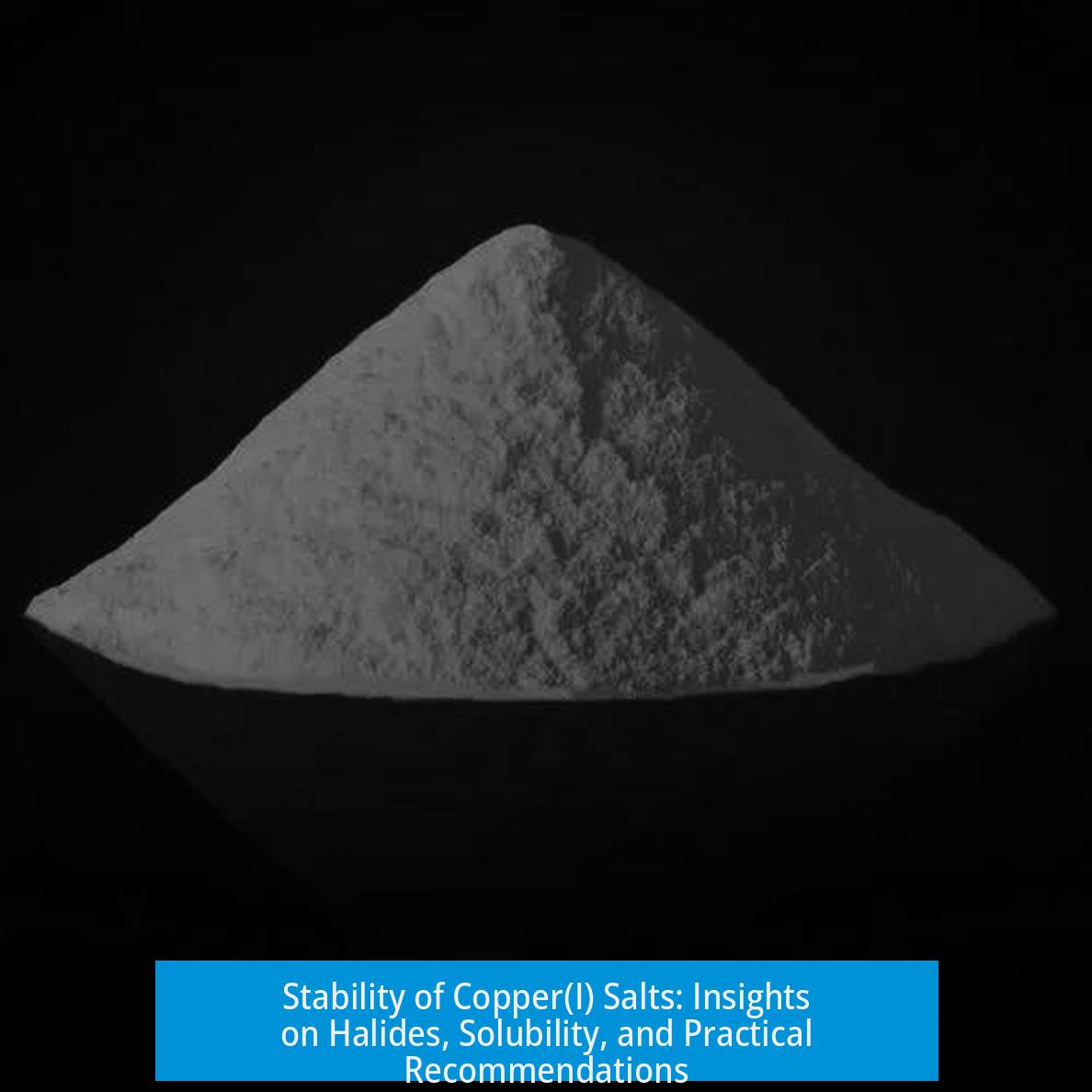How Stable Are Copper(I) Salts?

Copper(I) salts vary in stability depending on their specific composition, storage conditions, and exposure to moisture or light. Generally, copper(I) iodide (CuI) is quite stable when kept dry and protected from light. Copper(I) bromide (CuBr) and copper(I) chloride (CuCl) are less stable, especially in the presence of moisture and air, where they tend to oxidize or degrade. Soluble copper(I) salts are often moisture sensitive, with a few exceptions exhibiting higher stability.
Stability of Copper(I) Halides
- Copper(I) Iodide (CuI): CuI is described as “rock-stable,” maintaining its integrity well over time. Its main vulnerability lies in light sensitivity. Proper storage entails keeping it in the dark. Freshly prepared CuI performs best, typically prepared by dissolving in hot concentrated potassium iodide solution, then precipitating and gently drying. This compound’s limited solubility and redox issues can hamper reactions; alternatives like tetrakis(acetonitrile) copper(I) tetrafluoroborate can improve handling.
- Copper(I) Bromide (CuBr): CuBr is slightly less stable than CuI. It must be kept dry to maintain its quality. Its sensitivity to moisture makes it more prone to degradation if exposed to humid conditions.
- Copper(I) Chloride (CuCl): CuCl is least stable among the three common halides. It tends to oxidize, turning greenish when exposed to air over weeks. Proper storage in cold and dark environments can preserve it for months. Due to such oxidation, it is advised to prepare CuCl fresh before use.
Soluble Copper(I) Salts
Soluble copper(I) salts such as triflate and tetrafluoroborate salts are highly sensitive to moisture. Exposure to water leads to disproportionation. Copper(I) thiophene-2-carboxylate stands out as one of the more stable soluble copper(I) salts.
General Stability Considerations
- Water Sensitivity: Copper(I) is more vulnerable in the presence of water. Contact with moisture causes disproportionation into copper(0) and copper(II) species.
- Oxidation: Air exposure oxidizes Cu(I) salts like CuCl over time. However, copper(II) salts themselves act as oxidants, limiting further oxidation in some cases.
Practical Recommendations
- Always use freshly prepared CuI or CuCl for best reaction outcomes.
- Store CuCl in cold, dark conditions to reduce oxidation and prolong shelf life.
- Keep all copper(I) salts dry to avoid water-induced decomposition.
- Consider using tetrakis(acetonitrile) copper(I) tetrafluoroborate for better solubility and fewer redox complications in copper(I) reactions.
Key Takeaways
- Copper(I) iodide is the most stable of common Cu(I) halides if kept dry and dark.
- Copper(I) bromide requires strict dryness to maintain stability.
- Copper(I) chloride oxidizes on air exposure and should be stored cold and dark.
- Soluble copper(I) salts are often moisture sensitive; Cu(I) thiophene-2-carboxylate is an exception.
- Water causes Cu(I) disproportionation; avoid moisture contact in handling and storage.
- Fresh preparation and proper storage are crucial for reliable copper(I) salt performance.





Leave a Comment